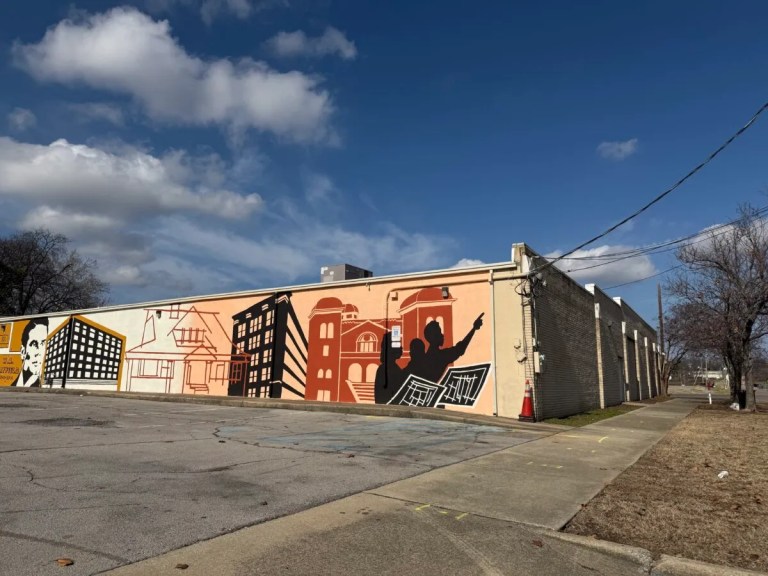Lost canyons, waterfalls and Cahaba lilies
Reading time: 6 minutes
Sponsored

Pop quiz. How many natural lakes do we have in Alabama? Answer: zero
How can that be?
Look at a map of Alabama. There are lakes all over the place. Guntersville Lake, Smith Lake, Lake Martin, Wheeler Lake, just to name a few.

But they are not natural.
“Other than old river meanders that get cut off, all the large lakes in Alabama are actually impounded sections of what use to be free-flowing rivers,” confirmed Randy Haddock Field Director at the Cahaba River Society.
Starting this week, Bham Now is launching a three-part series of stories on Alabama’s rivers. This edition we’ll examine how Alabama transformed many of our rivers into reservoirs, engulfing canyons, waterfalls, lilies and memories in the process. Our second story will delve into why many scientists call Alabama’s riverine system “America’s Amazon”. And our third installment will explore threats to our rivers and most importantly profile creative ways people are working together everyday to protect Alabama’s most precious resource.
A River Runs Through it
It’s hard to understand the current state of Alabama’s rivers without recognizing how much we physically changed our rivers last century. For example, some of Alabama’s first dams were built on the Tennessee River. Today, the Tennessee River is deep and wide.

But as shown in this photo from 1913, before the dams were built, people literally rode horses and wagons across the river.

In a century long march to bring electricity to every community, control flooding, enhance navigation and provide drinking water, we transformed rivers from narrow, shallow free-flowing almost “creek-like” rivers to large, deep, slow-moving, water-filled reservoirs.
Little River Canyon’s “little brother”

Little River Canyon National Preserve is a natural wonder. It is one of the deepest canyons east of the Mississippi. The water of Little River is considered by many the cleanest in the state. The river also wasn’t dammed. But did you know Little River Canyon had a “little brother?”
According to Jim Williams PhD, a retired biologist from Department of the Interior and Research Associate at Florida Museum of Natural History, “Little River Canyon, formed by the Little River ( a tributary of the Coosa River) in Cherokee and DeKalb counties, is a well known feature of the Alabama landscape. Most people don’t realize that Little River Canyon had a little brother in the Sipsey Fork River in Cullman, Walker and Winston Counties. This canyon was not as narrow as the Little River Canyon but non the less spectacular. Today its buried beneath waters of the 21,000 acre Lewis Smith Lake Reservoir. Construction of this reservoir began in the late 1950s and was completed in 1961.”
Here are the striking before and after pictures.




Little River Falls also had a twin – Clear Creek Falls

Canyons and coves not only disappeared after we built dams and reservoirs throughout the state, we lost waterfalls. One of the state’s largest waterfalls, Clear Creek Falls was submerged under Smith Lake. Once again, notice how very similar Clear Creek Falls looks like the iconic Little River Falls.

An excerpt from a Birmingham News article written on February 26, 1961 titled Legendary Falls will drown in their own water – documented Clear Creek Fall’s ultimate demise from Alabama’s landscape.
“Clear Creek Falls, located in Winston County’s southeast corner, 15 miles from Jasper, will become part of the impoundment from the new Lewis Smith Dam. Though the dam is located several miles below the falls, its 300 foot height will put the falls 100 feet under water.”
Here is a youtube color video of Clear Creek Falls.
Yes – there were Cahaba lilies on the Black Warrior River
Further downstream, close to Tuscaloosa, before dams were built along the Black Warrior river, there were large stands of Cahaba lilies. Again from Dr. Williams:
“The aquatic lily Hymenocallis coronaria, locally known as Cahaba Lily, formerly inhabited reaches of upland (above the Fall Line) rivers in the southeastern U.S. Today it is best known for its abundance in the Cahaba River above Centreville but large populations formerly inhabited the Black Warrior River. These large stands were lost when their shoal habitat was inundated by the rising waters behind navigation impoundments beginning in the early 1900s.”

Memories fading – A challenge
The memories of Alabama’s free-flowing rivers are fading fast. Less and fewer people were eyewitnesses to the changes that occurred on Alabama’s rivers over the past century. Ask a teenager or even a co-worker about Alabama’s lakes, and they will likely tell you we have natural lakes in Alabama We don’t.
If we are going to understand and protect our rivers and save remnants of the past, we need to recognize how we changed them so dramatically. And from that knowledge, we can work to preserve today’s rivers.
Stay tuned for our next installment on why Alabama’s river systems are known as “America’s Amazon”.



